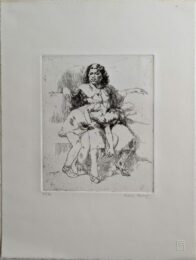

A guest curation by Baldwin Contemporary.
British contemporary artist Damien HIrst is largely known for his provocative and often controversial artworks. One of his most iconic series of works is the “Spot Paintings.” These paintings consist of rows and grids of colorful spots, each one meticulously painted and arranged on a canvas. The spots are usually of uniform size and shape, and they come in a wide range of colors.
Hirst began creating the Spot Paintings in the late 1980s and continued to produce them throughout his career. The series explores themes of order, randomness, and the relationship between color and form. The Spot Paintings challenge traditional notions of artistic creation, as many of the works are actually created by Hirst’s studio assistants following specific guidelines set by the artist.
The Spot Paintings have been exhibited internationally and have become an integral part of Hirst’s body of work. They’ve sparked discussions about the nature of art, originality, and the role of the artist in the creation process. Some critics view the Spot Paintings as a commentary on the commodification of art and the market-driven nature of the contemporary art world.
Hirst’s Spot Paintings have been met with a wide range of reactions, from admiration to criticism. Some see them as visually engaging and thought-provoking, while others criticize them for their perceived lack of depth or artistic skill. Regardless of the opinions, the Spot Paintings remain a significant and recognizable aspect of Damien Hirst’s artistic legacy.
“At the very beginning of my spot painting career I made some messy spots and I hated them, so I perfected them into perfect dots. For 25 years I made perfect dots. At the very end, I went back to the first ones – I made two or three – and I thought, I’m just going to make these messy ones again. And I really liked them.” – Damien Hirst